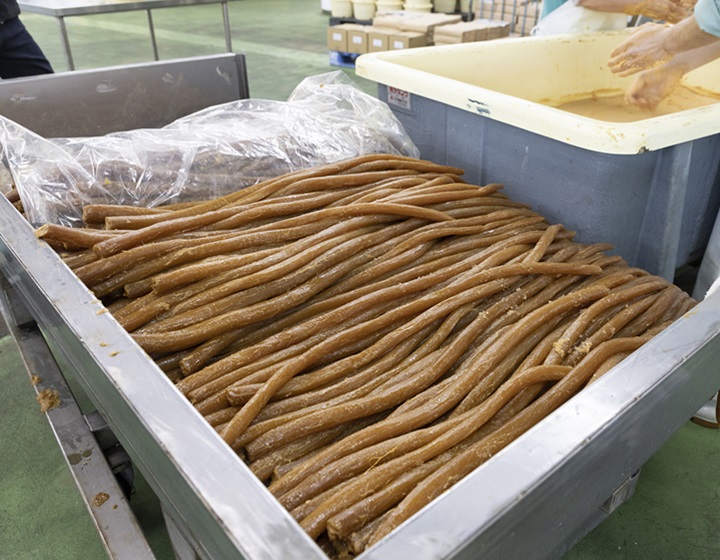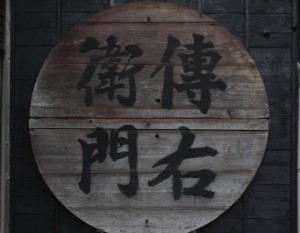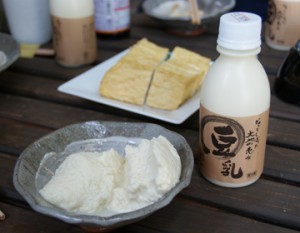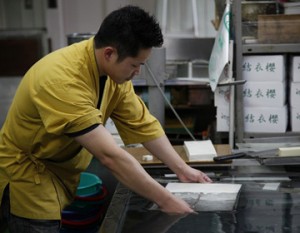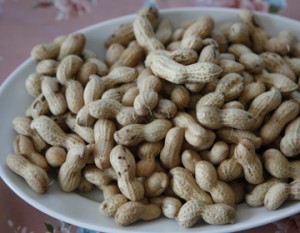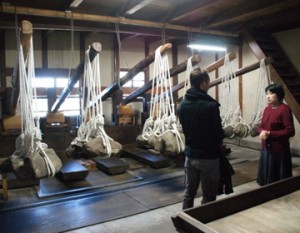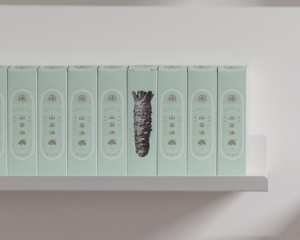Moriguchi-zuke from Yamatoya Moriguchi-zuke Sohonke is an amber-colored pickle, which is worthy of being called a “jewel of pickles. Moriguchi-zuke is a standard souvenir of Aichi Prefecture, made by pickling and aging Moriguchi daikon (radish), which grows to over one meter in length, for three years. I want to create a taste that is not to everyone’s taste, but one that has core fans even though some people don’t like it,” says President Moriguchi. The president of the company explains the history of Moriguchi-zuke.
Long, thin daikon radishes grown along the banks of the Kiso River are pickled.
In Moriguchi City, Osaka Prefecture, a variety of vegetables pickled with sake lees was very popular, but for some reason it has disappeared. The reason is not known, but it is said to be due to urban development.
The Moriguchi-zuke, which came to be known as Moriguchi-zuke along with Nara-zuke at Yamatoya Moriguchi-zuke Sohonke, founded in 1871, is made from Moriguchi daikon, a long, thin radish that grows only in the soft soil along the Kisogawa River. Although pickles pickled with sake lees more than once are collectively called “Narazuke,” the lees used in Nara pickles, the traditional pickles of Nara Prefecture, are mainly sake lees only. The company’s Nara-zuke and Moriguchi-zuke are characterized by the use of mirin (sweet sake) lees in addition to sake lees.
Moriguchi daikon used to be grown in Gifu Prefecture, upstream of the Kiso River, but its production has been expanded to Fuso Town in Aichi Prefecture, midstream of the river. Moriguchi daikon is a rare type of daikon that can grow to over 1 m in length due to the soft soil. 191.7 cm Moriguchi daikon grown in Fuso Town was recognized by Guinness World Records in 2013, making the name famous.
Spread throughout Japan in the 1950s as Aichi souvenirs
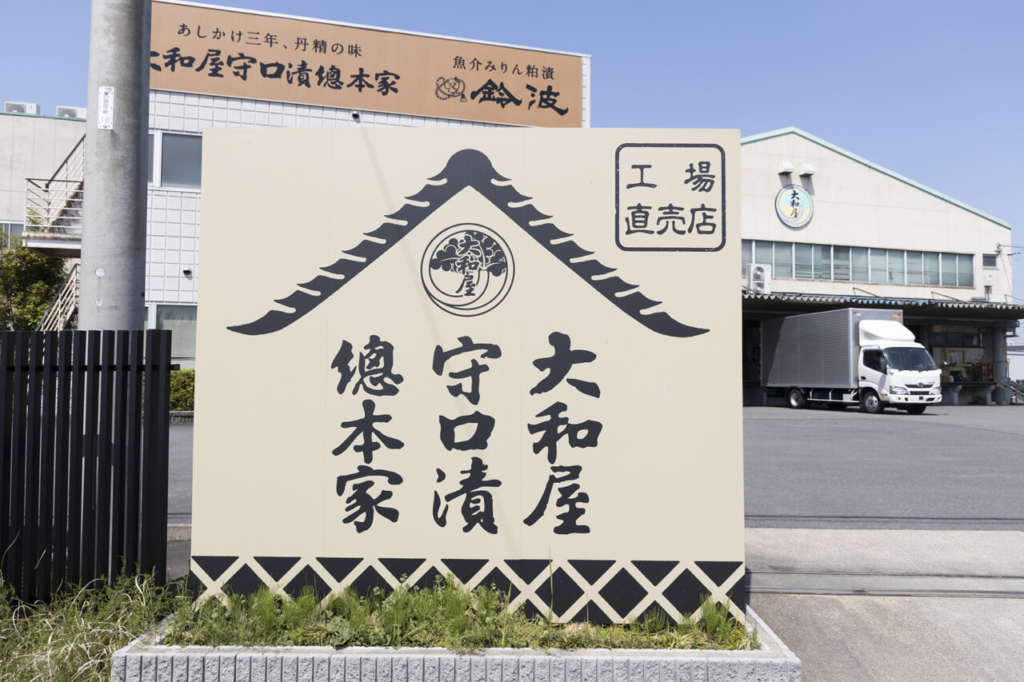
Yamatoya Moriguchizuke Sohonke began to focus on Moriguchizuke around 1945, when a delegation of the Emperor of Japan toured the country in 1946. When the Emperor’s entourage visited Nagoya, Moriguchi-zuke was presented as one of the local specialties, and the Emperor’s entourage liked it so much that they began to regularly supply it to the Imperial Household Agency.
Moriguchi-zuke became a mainstay of the Yamatoya Moriguchi-zuke head family, and Moriguchi-zuke was also a valued souvenir of the Aichi National Athletic Meet held in 1948, and thus became an established souvenir of Aichi Prefecture.
Because the region is known for its production of mirin (sweet sake) and sake
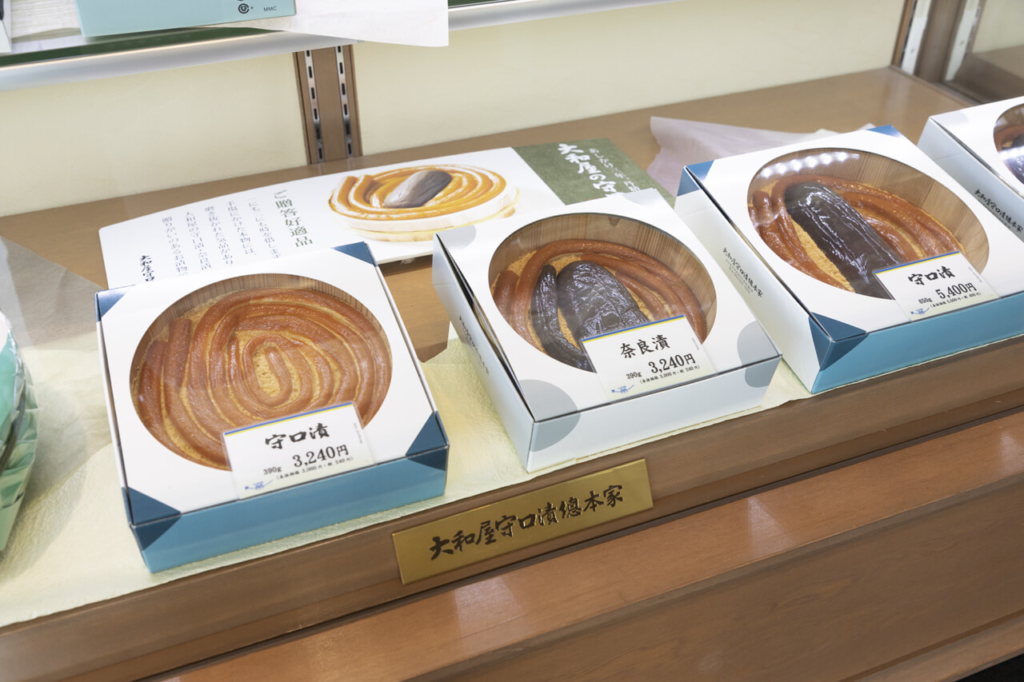
Aichi Prefecture, mainly in the Mikawa region and the Chita Peninsula, has been known as a major producer of mirin (sweet sake) and sake since the Edo period. Yamatoya Moriguchizuke Sohonke’s Moriguchizuke and Nara-zuke are mainly made from mirin and sake lees, which are purchased from companies that produce mirin and sake in Aichi Prefecture.
The first step in making pickles is to make the ingredients salty so that the water will drain out. This prevents the ingredients from spoiling for two to three years. However, since pickles are salty as they are, the company adds mirin (sweet sake) lees or sake lees to remove the salt content and add the flavor of sake lees. The salt is removed to soften the tough fibers of the daikon, and the flavor of sake tickles the nose. In addition, the mirin (sweet sake) lees adds richness and sweetness. Mirin is also used in the Moriguchizuke of Yamatoya Moriguchizuke Sohonke. Just as adding mirin in cooking makes the taste more gorgeous and deepens the flavor, so too, the final finishing of the pickles with mirin makes them taste many times more profound.
Slowly marinated and matured for 3 years

Since pickles have been made at home for a long time, the pickles you buy from us must be different, and you must be able to make people think that they are as good as you think they are. We are confident in this point,” says Masayoshi Suzuki, chairman of Yamatoya Moriguchizuke Sohonke.
The company’s method involves pickling the fish twice in salt, then marinating it in sake lees three times to remove the salt. The second pickling in sakekasu is done in a bed of sake lees, mirin (sweet sake with mirin), and syrup. The third and final pickling is done with sakekasu, mirin (sweet sake with mirin), mirin, and salted soybean flour. In this way, even though it is a pickles, it has a much sweeter taste.
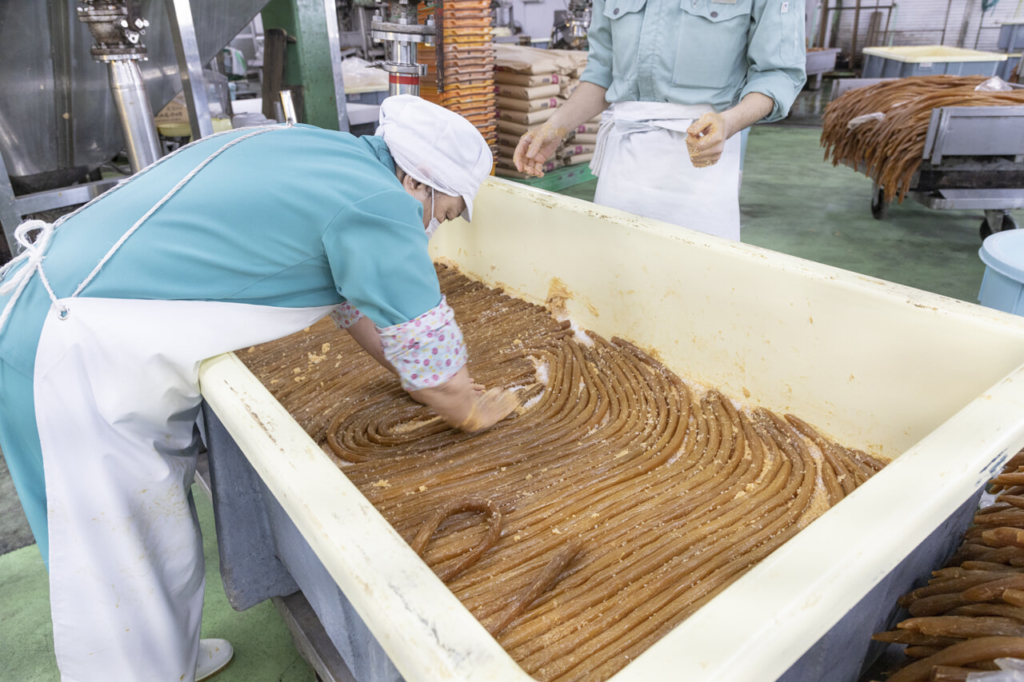
Although the ingredients used for pickling are mixed in a certain way, craftsmen make adjustments according to the season, temperature, humidity, and other factors. Also, each brewer has its own unique flavor and aroma of sake lees and mirin (sweet sake and mirin) lees, so the artisan blends several kinds according to the type of pickles to be made. This is where the craftsmen show their skills.
It takes three years to complete the process. In addition, the production process is not left to machines; many parts are done by hand by craftsmen based on their experience, making it a gem that takes a lot of time and effort to cultivate.
Value “sweetness.”
The first thing you will notice when eating Moriguchizuke from Yamatoya Moriguchizuke Sohonke is its sweetness. Not only the sweetness of mirin (sweet sake) and mirin-kasu (sweet sake lees), but also the sweetness of the lees blended with syrup and the use of coarse soybean flour as a finishing touch. The taste is not too alcoholic, and even children can easily enjoy it.
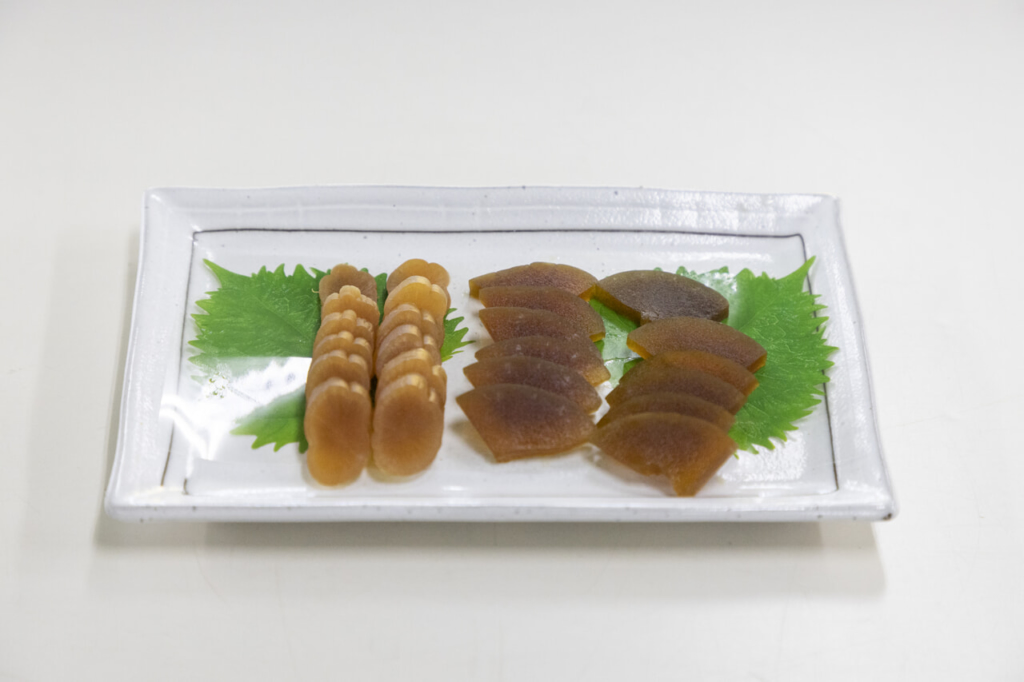
Suzuki says, “Generally, pickles are thought of as spicy or salty, but we find value in the ‘sweetness’ of our products.
Major manufacturers are forced to be conscious of the average score in order to get their products on the shelves of supermarkets and other stores. Most of them aim for a score that is not 100, not 50, and somewhere in between. However, Yamatoya Moriguchizuke Sohonke does not aim for an average score. They are aiming for a taste that will attract a core fan base that will continue to buy their products even if they are so sharp that there are clear differences between likes and dislikes.
Many variations other than Moriguchi Daikon
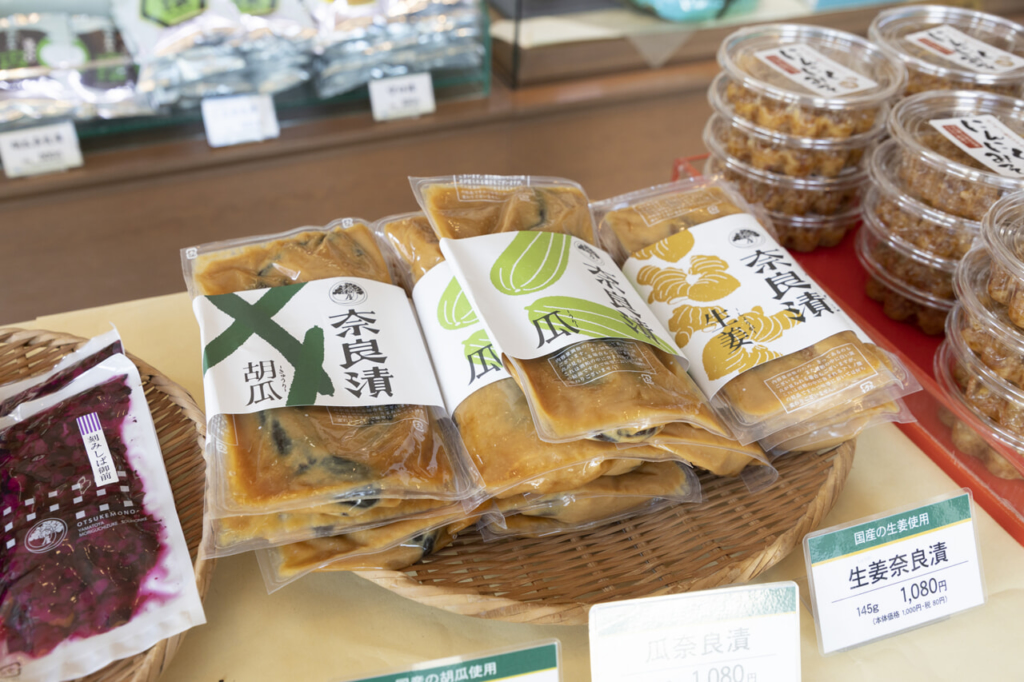
Another characteristic of Yamatoya Moriguchizuke Sohonke is the wide variety of pickling ingredients. In addition to the Moriguchi daikon (radish) used in Moriguchizuke and other standard Nara pickles such as melon, cucumber, and ginger, the company also produces a wide variety of vegetables such as bamboo shoots and chrysanthemum. In addition, a related brand, Suzunami, a product made from fish marinated in mirin (sweet sake) lees, has become extremely popular. In the pickles industry, where many manufacturers are conservative, Suzunami may be an outlier.
Cheese with Mirin Kasu-zuke (pickles with mirin),” which makes the most of the pickles manufacturing process
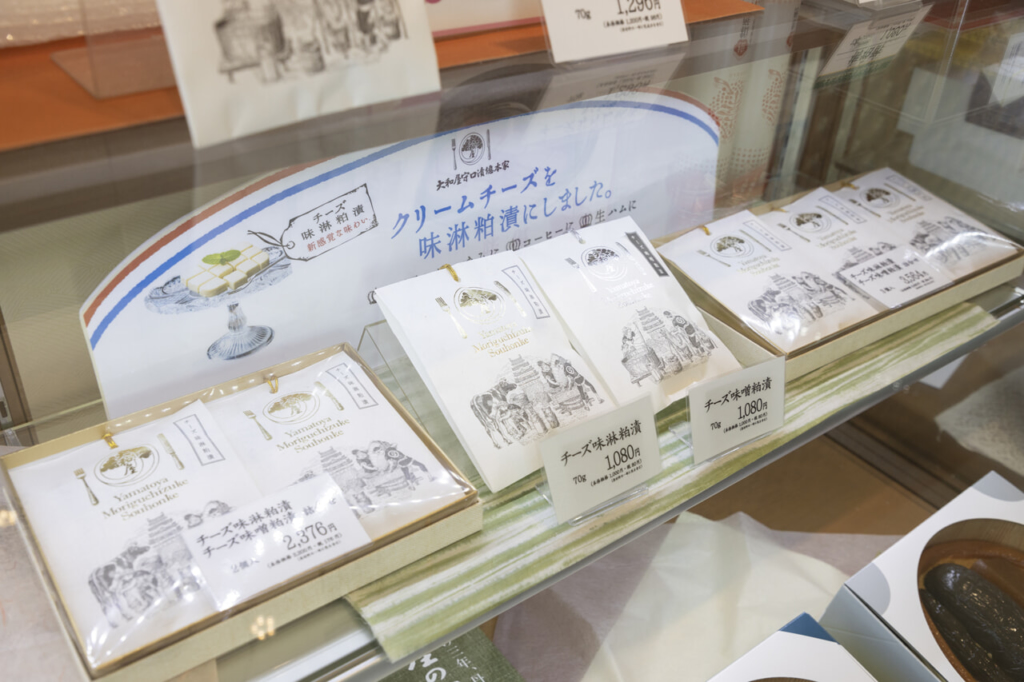
There is also a product called “Cheese Mirin Kasu,” which is cream cheese marinated in mirin (sweet sake) lees, utilizing the Moriguchi-zuke pickling process. One bite and you will feel the rich sweetness of mirin while maintaining the aroma of cheese, which is truly a new taste sensation. It is a perfect accompaniment to sake, and once you try it, you will definitely want to repeat the experience.

When commercializing something that has never been done before, there are many voices of opposition even within the company. In the case of the commercialization of “Cheese Mirin Kasu-zuke”, there were some objections at first, and it took about five years of development before it was completed. Kizami Moriguchi-zuke, a product made by cutting Moriguchi-zuke into small pieces and arranging them so that they can be easily eaten as they are, is now one of the most popular products, but when it was first planned, some people opposed it, saying that its slim and long shape was its strong point. Reform also requires the power to carry through with one’s ideas.
Continuing the tradition, we will take on the challenge of being chosen in the future.
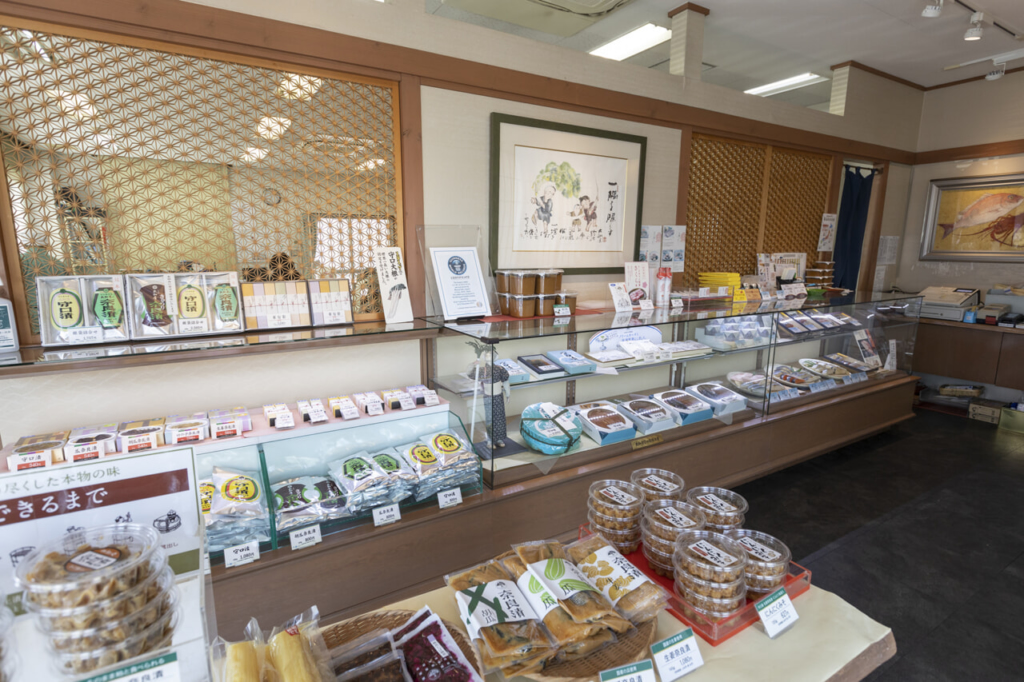
The company has taken on a variety of challenges in this way, but as dietary diversity has become the norm and all kinds of food have become part of the dining experience, the younger generation has become noticeably less interested in pickles, and the company has had to seriously address the issues it has long faced as a pickles manufacturer.
The company has therefore been urgently seeking to “balance quality and price with a view to convenience store sales” in recent years.
Of course, there has been much discussion about product development with an eye to youth demand, and the company has also developed products such as the aforementioned “Kizami Moriguchizuke” that are easy to eat.
However, this is only one of the hooks to get people interested in the company’s products. Mr. Suzuki has always believed that it is meaningless to develop products that are accessible to the younger generation unless they are placed in the right places.
Convenience stores are the first place where the younger generation can easily pick up products. In fact, even if the prices of products are slightly higher than those in supermarkets, young people are highly interested in the convenience of convenience stores.
However, they do not have the same high sales prices per customer as the souvenir shops and department stores that are the company’s main battlegrounds. For this reason, the company believes it is important to develop products that young people will want to pick up without sacrificing quality, at a price range that can be sold at convenience stores.
Yamatoya Moriguchizuke Sohonke, which has been preserving tradition and using its skills to create new products one after another, faces the challenge of young people’s shift away from pickles. If they only stick to tradition, they may lose touch with the needs of consumers, and if they pursue convenience, they may become cheap. However, the company, which has been developing avant-garde products, has the know-how and knowledge to solve this problem.



